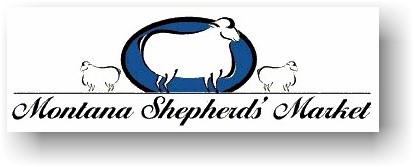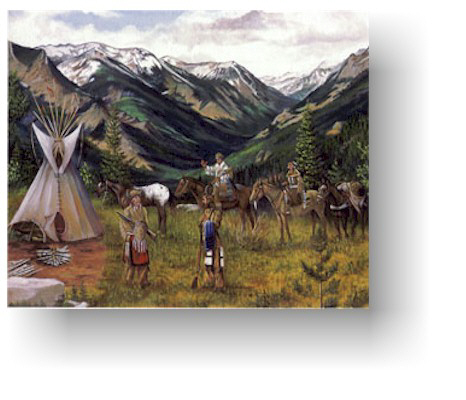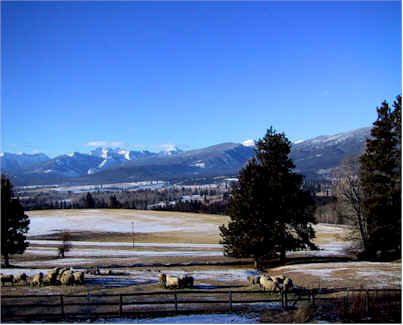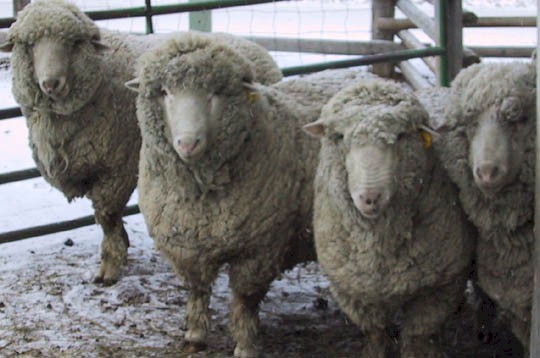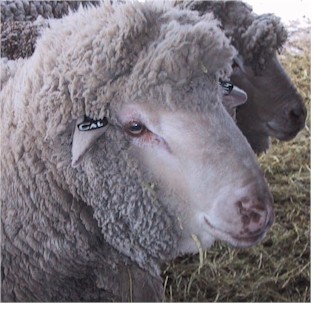|
During the 1500's trade began in North America
between coastal Indian tribes and the Europeans. There soon began a brisk,
mutually beneficial exchange of Indian furs for manufactured goods such as
blankets, tools, cooking utensils, cloth and guns. It wasn't long before
standards of value were established.
On blankets, this value became permanently attached in the form of
"point" stripes–little lines on the blanket indicating its
value in beaver pelts: one line per pelt.
The early blankets were all hand loomed and
dimensions varied even within the established sizes.
The three point size was the most popular size and
they were loomed double LONG, because it saved time in warping the loom,
making them DOUBLE 3 point trade blankets, each having a 6 pelt value.
For 3 pelts you could split the blanket and receive half of it which is
known as a SINGLE three point blanket.
As trade routes and traders became more competitive and the animal
populations were depleted, Europeans began to move their trading posts and
rendezvous sites deeper into the interior of North America. Major
fur trading companies became bitter rivals for acquiring Indian furs
resulting in wars and disagreements between and among both traders and
tribes which kept the dynamics of the fur trade in constant flux.
The push by governments for trade expansion lead to exploration and,
in 1793 Alexander Mackenzie made the first trans-continental trip across
Canada to the Pacific Ocean. In 1802 when Thomas Jefferson read
Mackenzie's account, he began to plan the Lewis and Clark Expedition as he
did not want Great Britain to lay claim to the Columbia River Basin.
With the Louisiana Purchase in 1803, the stage was set for the Corps
of Discovery to explore, map, and report on the new lands and hopefully
find the fabled " Northwest Passage".
Jefferson, Lewis, and Clark all realized they would need
Indian help along the way so they took many trade items with them to
exchange for assistance and to promote good will. Among these items were
double 3 point trade blankets in three colors–natural, cochineal red,
and indigo blue–all with 4 wide black stripes and six points.
By 1806 the Lewis and Clark Expedition was successfully completed.
Much of that success was due to skill, preparedness, and good fortune.
However, without the help from many Nations of people along the way they
undoubtedly would have simply disappeared as they bartered for food,
shelter, guidance, and horses that played a vital role in the success of
the endeavor.
Unfortunately, the ensuing years spelled disaster for these same
Nations of people. Both alcohol and disease entered the trading scheme.
Indian fur routes were disrupted and Europeans lay claim to tribal lands.
When Europeans quit wearing beaver hats, the demand for beaver pelts
diminished as had the animals bearing the fur.
Trade blankets, though, have never lost their popularity. As
technology improved and weaving was done on increasingly sophisticated
looms, patterns of great color and complexity emerged. Today there
are woolen mills weaving entire pictures and beautiful graphic art into
blankets.
The simple, two colored, double three point trade blankets have not
been made for some time. In making our North American Trade Blankets, we
recognize the Lewis and Clark Expedition's bicentennial commemoration, and
remember the many Nations of people who helped make that Expedition a
success.
In purchasing one of our North American Trade Blankets, you
can own a limited edition, numbered replica of the early fur trade days.
Let your imagination take you over the old trails. You can relive this
historical time wrapped in "WoolSoft" comfort not
experienced by those in the Corps of Discovery 200 years ago.
|
